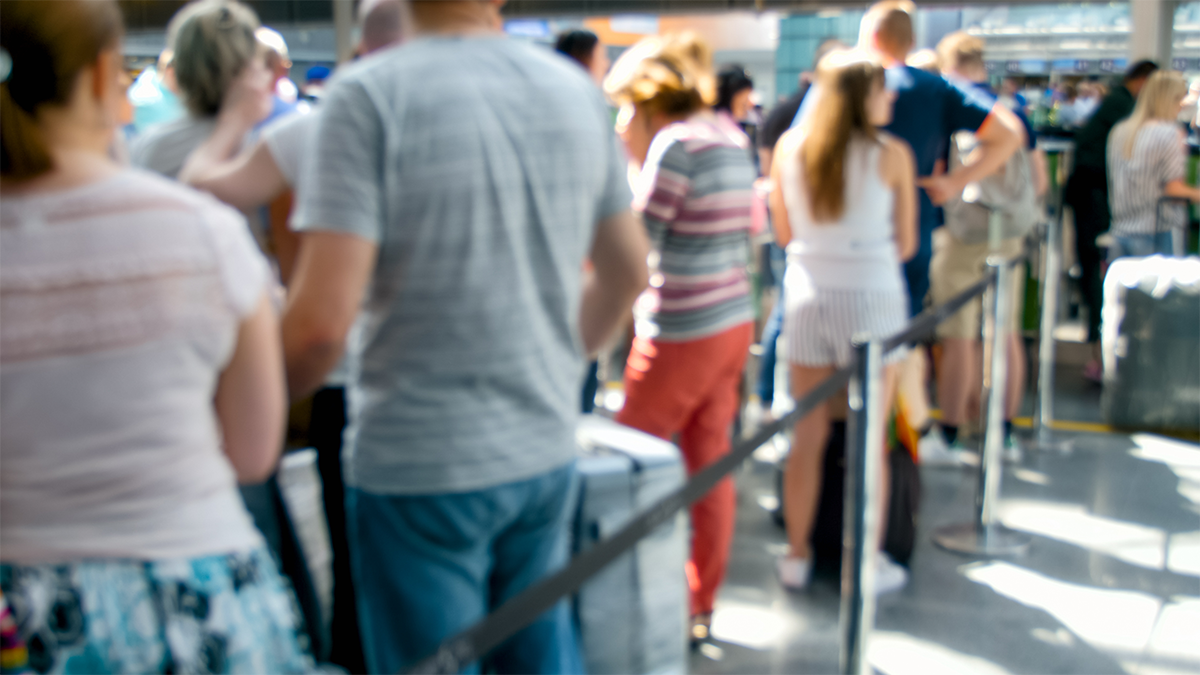WASHINGTON — Air travel will surpass pre-pandemic levels this spring, according to new estimations, underscoring the urgent need for federal government investment in the U.S. air travel system which is already strained by inefficiencies and passenger dissatisfaction.
“Periods of high demand—like spring break and holiday weekends—are a stress test that reveal the inadequacies of our current air travel system,” said U.S. Travel Association President and CEO Geoff Freeman. “Demand may be high now, but countless frustrating air travel experiences may cause passengers to choose other modes of transportation or simply stay home in the future.”
Industry trade group Airlines for America projects 2.6 million U.S. air passengers per day in March and April – a 1% increase over 2019 levels.
However, years of federal underinvestment have resulted in a stretched-thin system that can no longer meet rising demand, negatively impacting the overall travel experience. According to a recent poll from Ipsos, nearly half (45%) of American travelers rate the air travel experience as average or below average. These travelers cited crowds and congestion, flight delays or cancellations, airport security process and cumbersome travel logistics as the main contributors.
According to the same survey, nearly 4 in 10 leisure travelers (36%) would travel more in the next six months if the travel experience was not so much of a hassle today.
“The U.S. holds a major opportunity to grow the economy by operating a best-in-class air travel system that can handle long-term demand and generate significant revenue,” said Freeman. “Americans want to travel, but they want a reliable system that works.”
Federal opportunities to improve the air travel system
The U.S. Travel Association has identified multiple recommendations to address system inadequacies to meet rising demand.
First, Congress will have an opportunity in this year’s Federal Aviation Administration bill to address inefficiencies across the system and build a world-class air travel experience by accelerating air traffic modernization, growing the aviation workforce and modernizing airport infrastructure. For example, there are currently 1,200 fewer certified air traffic controllers than there were 10 years ago.
Second, the federal government should accelerate the use of biometric data to expedite the airport security process and create a more seamless, secure travel experience for air travelers. Approximately half of Americans are comfortable sharing biometric data with TSA – such as fingerprints and facial recognition – to check in for a flight, get through airport security and board a plane.
The survey also found that those currently enrolled in an expedited airport clearance program – such as TSA PreCheck or CLEAR – were more likely to have a positive experience getting through airport security than those who are not. More than half (54%) of people enrolled in these programs rated their experience as good or excellent, compared to just 35% of people who are not enrolled.
“Strong demand today means nothing if passengers aren’t satisfied,” added Freeman. “The federal government needs to make the critical investments now to ensure we still have passengers in the future.”

